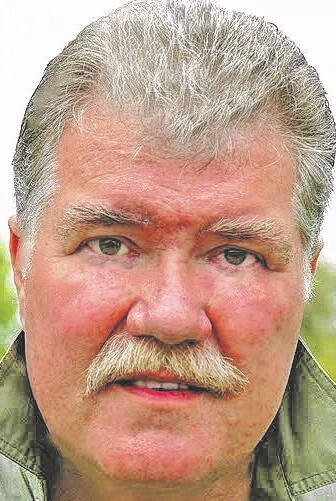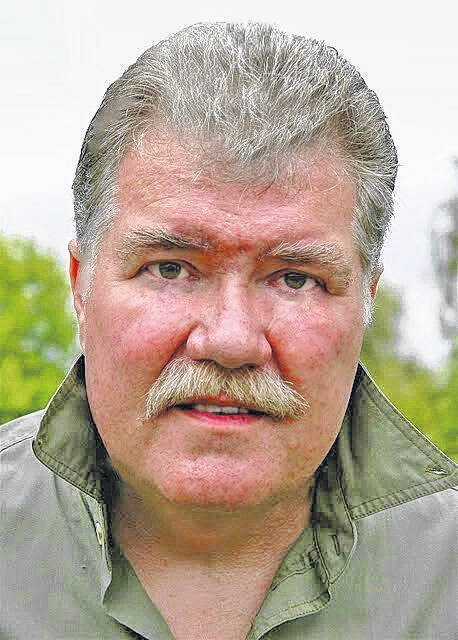

“Winter won’t last forever,” my mother used to say—usually about midway through the season.
The holidays were long over. January had taken charge of the new year. Subsequent doses of snow and cold were frequent and liberal, as if this kick-off month were doing its best to show us how a real Ohio winter looked and felt.
I was feeling housebound and stir-crazy. Spring seemed impossibly far away. Too distant to imagine.
Though Mom was a woman of prodigious faith and patience, there was always a hint of wistful longing in her reassuring voice. I expect she was speaking as much to herself as to me.
Winter won’t last forever, and February may be winter’s final full month, as well as the year’s shortest. But winter likely isn’t done with us yet so I’m not about to claim we’ll enjoy easy coasting from here on out.
Various Indian tribes referred to this lunar span as the “Hunger Moon.” For those indigenous people, it was, indeed, a tough month. Even the best hunters knew times could be lean. Starvation lurked only a nasty weather turn away—and February weather was notoriously capricious.
That’s still true. Brooks can run brim-full one day, and be frozen solid the next.
A bright sun morning and mild temperatures fake you out, so you head afield wearing a sweater and light jacket. But that same afternoon the weather does a fast switcheroo turns dark and cloudy, spits sleet and snow in your eyes, and blasts you with gale-force arctic winds. Even bundled up in your heaviest parka, you shiver and nearly freeze to death.
Folks whose lives are closely interwoven with nature and seasons have always realized February wasn’t to be trusted.
Savvy farmers and countrymen of a not-too-distant past certainly weren’t fooled. As recently as a couple of generations ago, if a man wanted his household to stay warm, he knew he needed to take a critical look at his woodpile in February. Was there sufficient cordwood split and stacked to fuel the stove until spring? Was there enough stored fodder and hay for his livestock? His animals had to be fed until new grass greened in the meadows.
Clearly, February, for all its promise, is always best viewed as a simple seasonal road marker. Six weeks from now, the passing equinox will mark spring’s official beginning. A faint but discernible point at which I can—and do!—aim my hopes.
Of course, the actual weather on that pivotal day might look and feel nothing at all springlike. But I also know the increasing sunlight and its coinciding warmth will eventually win out.
Still, it’s wise to never forget February is all winter, no matter how unseasonably balmy it may turn for a day or two towards the latter part of its truncated tenure.
Yet it’s more than a merely stubby winter spacer along the pathway leading to windy March. February offers its own unique—though often subtle—hints and signs of the season. Things are starting to stir, and reawaken; new life is already in the making.
Here along the river, almost any night when I care to bundle up and go stand awhile outside in the cold darkness, I have a good chance of hearing a pair of great horned owls exchanging romantic messages.
Theirs isn’t a Shakespearean conversation. Those big, fierce, nocturnal hunters are a far cry—or hoot—from Romeo and Juliet. And there’s nothing star-crossed about their romance.
Still, the sentiment behind the booming vowels stems from a similar impetus.
On a cold winter’s night, during the season’s latter half, I look forward to eavesdropping on their auditory tryst. One of those phenological mile-markers I annually await and find irresistible—the reason why I regularly stand outside on bitter February evenings, shivering and listening, risking hypothermia, worrying my wife.
The owls’ singular notes seem to hang suspended in the cloistered darkness—floating between frozen earth and star-spattered sky, adrift amongst the ghostly old sycamores of the thick riparian woods.
There’s something raw and primordial about these owl conversations—a promissory colloquy that extolls and counts on a future sufficiency of fresh and succulent flesh. Ample nourishment for feeding anticipated young awaits in those milder days to come.
A reassuring conversation any would-be couple might have, and any parent can understand…“Don’t worry, there will be lots of good food readily available to feed the youngsters!”
Nope, definitely not Romeo and Juliet—rather, carnivorous intentions with reassurances of tasty plenitude.
Moreover, those wise old owls will act upon this belief. Soon they’ll select a nest and begin sitting eggs. And because the earth keeps turning, bringing spring our way, by the time the hungry little owlets hatch, they’ll eat well and thrive.
Spring is not all about wildflowers and humming bees.
I am, thank God, my mother’s son, and I’ve done my best to adopt and practice her dual virtues of patience and faith. When February rolls around, I finally allow myself to start believing there’s a vernal green light at the end of this long, cold tunnel. A cautious hope.
Mom was right! Winter won’t last forever!
Reach Jim McGuire at [email protected].

